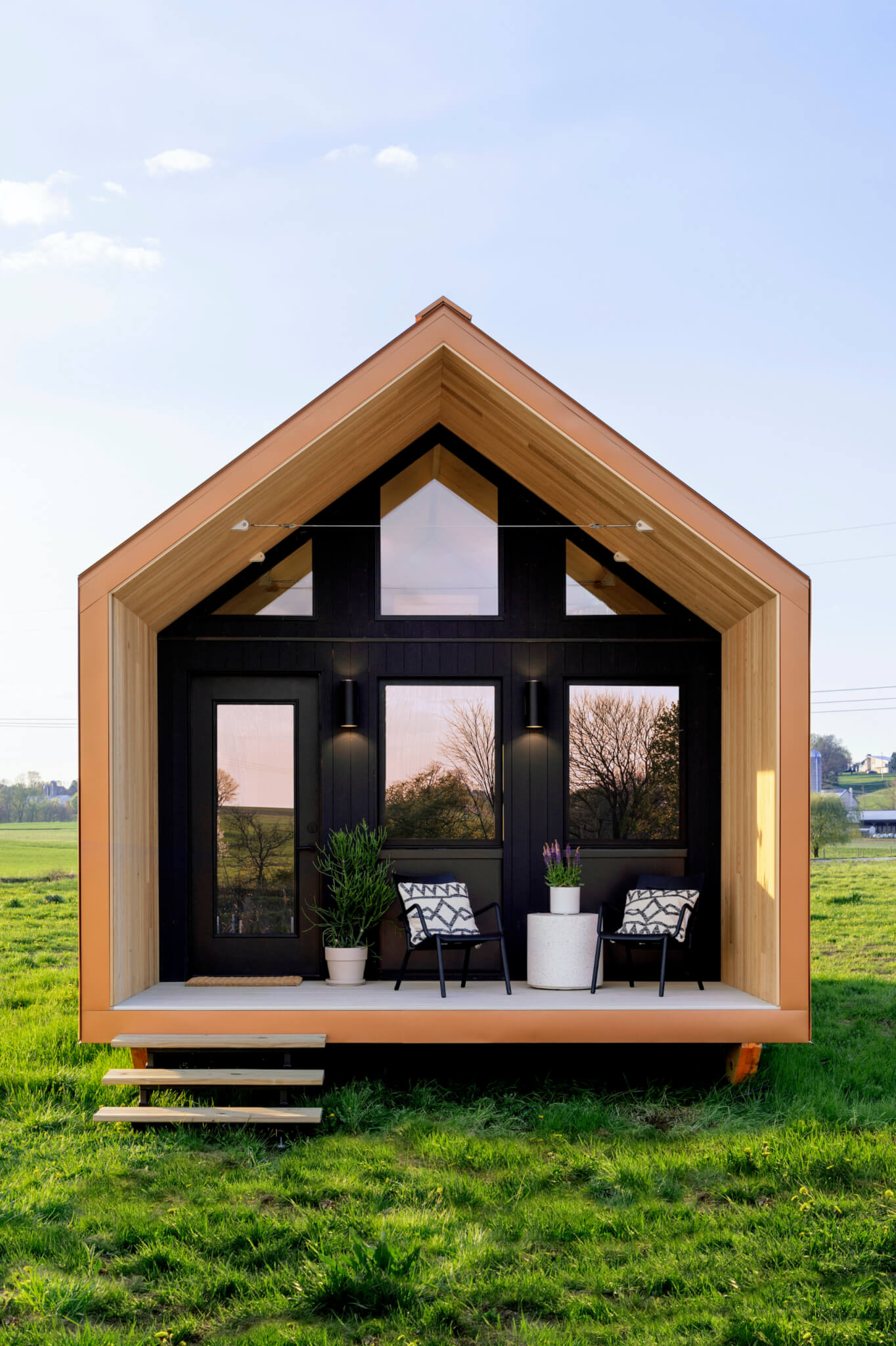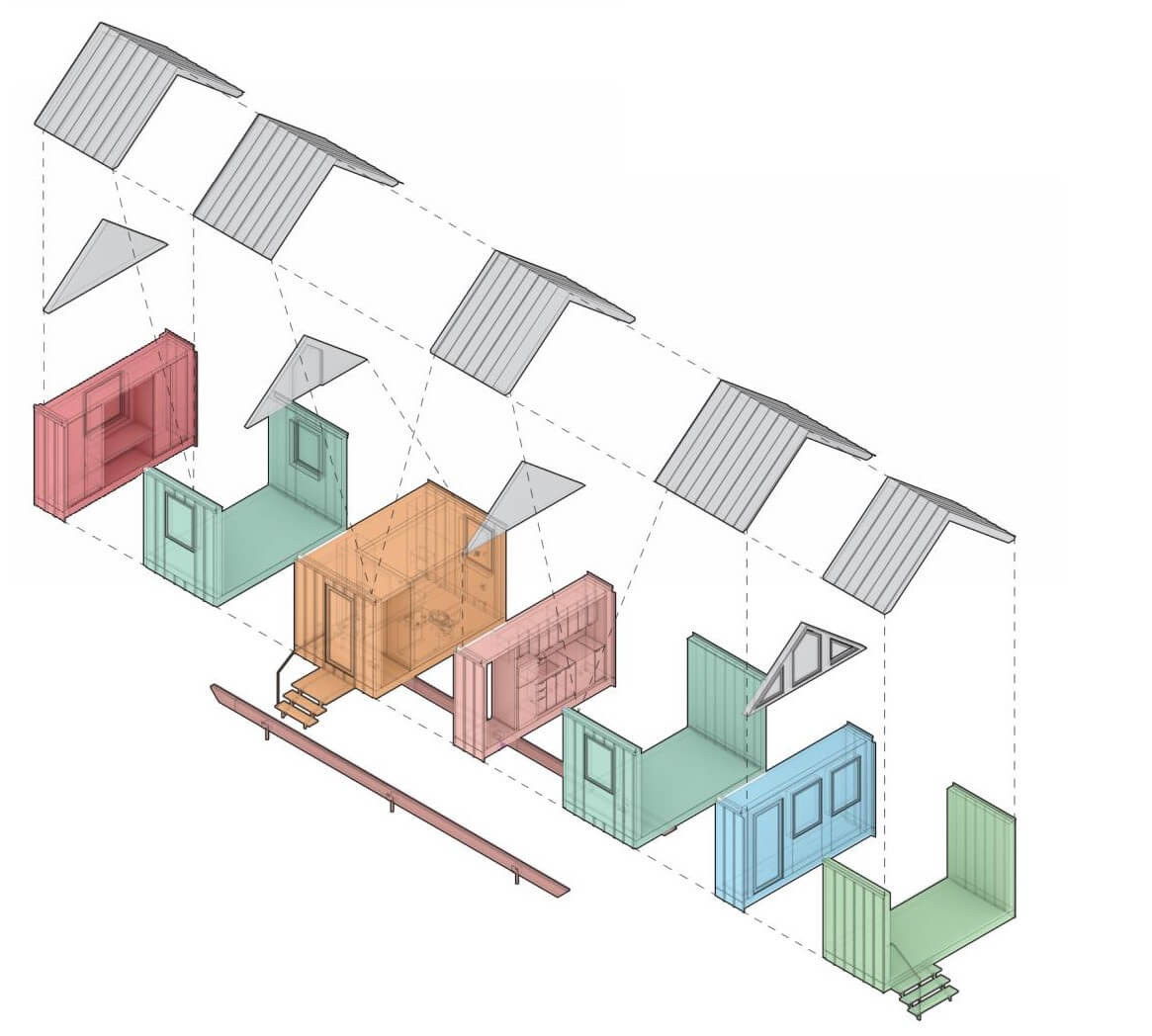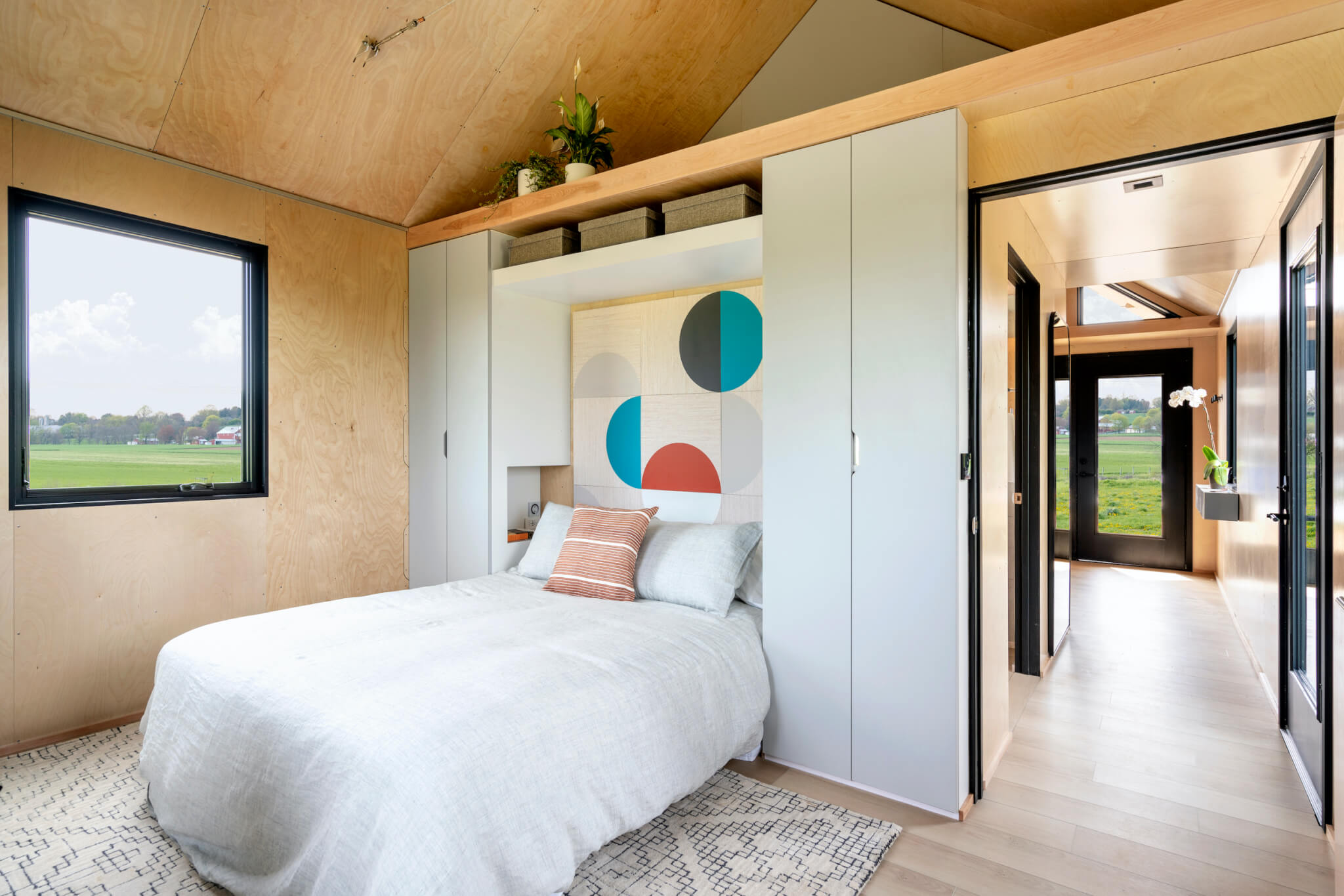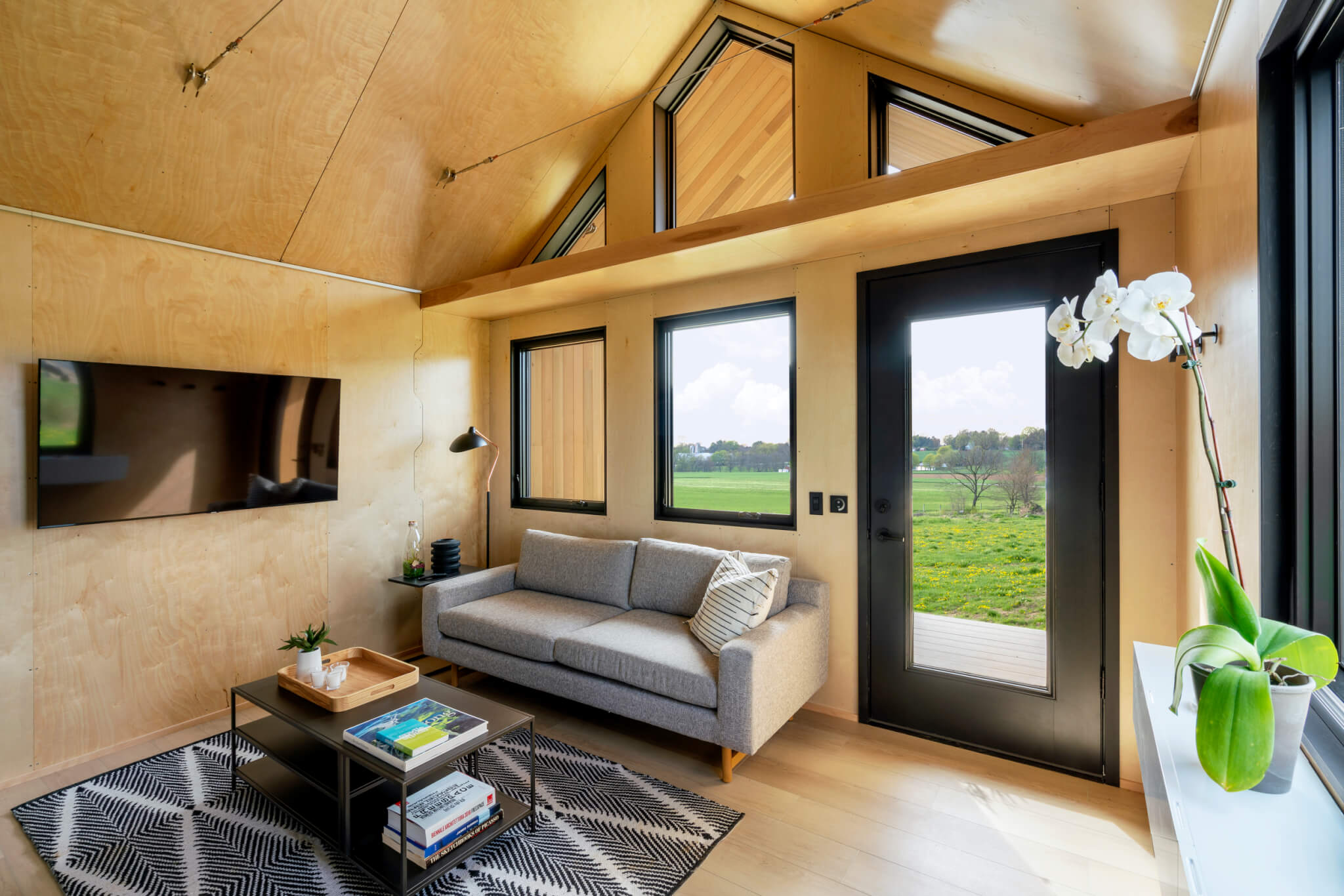Can Liv-Connected crack the modular housing code?
Liv-Connected, a modular construction company, is hard at work trying to solve the country’s housing crisis. Their solution? A customizable, prefabricated home that can be assembled on-site in four hours. The company was founded in 2019 by physician Herbert Rogove—an early proponent of telemedicine—and his son Jordan Rogove, cofounder of the New York City–based architecture firm DXA studio. They are joined by fellow DXA cofounder Wayne Norbeck and Virginia Tech professor of architecture Joe Wheeler. Liv-Connected began taking orders for its homes in June.
Liv-Connected has partnered with Atomic, a company with experience in rapid-assembly structures for live events, to manufacture modular homes in a 110,000-square-foot factory in Pennsylvania’s Lancaster County. Liv-Connected currently offers two models to clients, which include both developers and individual prospective homeowners: Conexus, whose base is a 500-square-foot, one-bedroom home, can be manufactured with additional bedrooms and bathrooms; and Via, which is on wheels and can be towed as a trailer, is a tiny home that contains a living, sleeping, and kitchen space in models as small as 200 square feet. The Conexus model starts at $150,000, while the Via model begins at $90,000. The company hopes to offer multifamily units in the future, as the Conexus model can be stacked.

Beginning with an online form that is similar to customizing other types of consumer products, clients can choose from a range of colors and materials for the walls, siding, cabinets, countertops, and floors. Once the design is finalized, the website will generate a PDF for the client and a work order for Liv-Connected in a process that feels “more like a car buying experience,” Jordan Rogove told AN. Liv-Connected manufactures the component parts of the home, so the bath and kitchen components arrive with appliances, and “link” pieces can be added to bedrooms and living rooms to extend room sizes. The whole design and production process can be completed within six months, and once preliminary site work is finished, a one-bedroom Conexus can be assembled in as little as four hours. Given its modular design, homeowners can choose to add rooms after the initial assembly. Liv-Connected estimates that its system reduces construction waste by 90 percent from that of a typical single-family build.

Jordan Rogove said the modular home is not “just a shed on wheels.” The components of the home are produced through CNC milling, providing not only “hyper-precise manufacturing” but the potential to scale up production in other factories. Rather than shipping volumes filled with empty space, as other modular construction companies have tried, most of the materials for a Liv-Connected house can be stacked flat for shipping, saving funds that can be spent on better construction and materials. The company now produces six units per month, but it has contracts for 200 of each home type scheduled for 2023. The company is also one of four finalists for a request for proposal from the State of Texas for 26,000 rapidly deployable homes in the event of a natural disaster.
Liv-Connected also differs from competitors in its healthcare plug-ins. Customers can add a fall-monitoring feature to their home (which uses lidar), and homeowners have the ability to specify whom to call in an emergency. Jordan Rogove said that this is not like “Big Brother,” as there is no video monitoring in the home. Systems can be reconfigured as residents and healthcare needs change. Senior project manager Allysa Taylor said that in the future, the company hopes to incorporate more healthcare plug-ins, such as smart mirrors that display live medical data and appointment information. These could, for example, be linked to a Fitbit or an Apple Watch. While these features are appealing, they’re also arriving in a post-Roe v. Wade era in which the ability to track personal health data in the home could have serious unintended consequences.


Liv-Connected also views itself as offering one solution to the ongoing housing crisis. In addition to its low cost relative to traditional builds, Jordan Rogove sees the potential to partner with developers on commercial-to-residential reuse projects. Liv-Connected also anticipates an option in which the company incorporates real estate acquisition into its model. Currently, this is left to clients and third-party partners. Liv-Connected also requires only a $500 deposit, which can be paid by credit card, and financing is available for Conexus models through Rocket Mortgage, the company’s preferred lender. While the homes’ costs are below market rate in much of the country, purchasers of these homes are still subjected to the array of structural risks that exist in home financing. The company has seen interest from developers: While faster construction and lower costs are appealing to homeowners, this speed also interests developers, who see the potential to increase profits.
As Liv-Connected scales up, its appeal to homeowners will only increase. Jordan Rogove expressed a cautious optimism for the future of the company. “There’s so much in zoning and the building code that is antithetical to finding less expensive housing solutions,” he said. Liv-Connected’s offerings stand to be a “game changer.”

